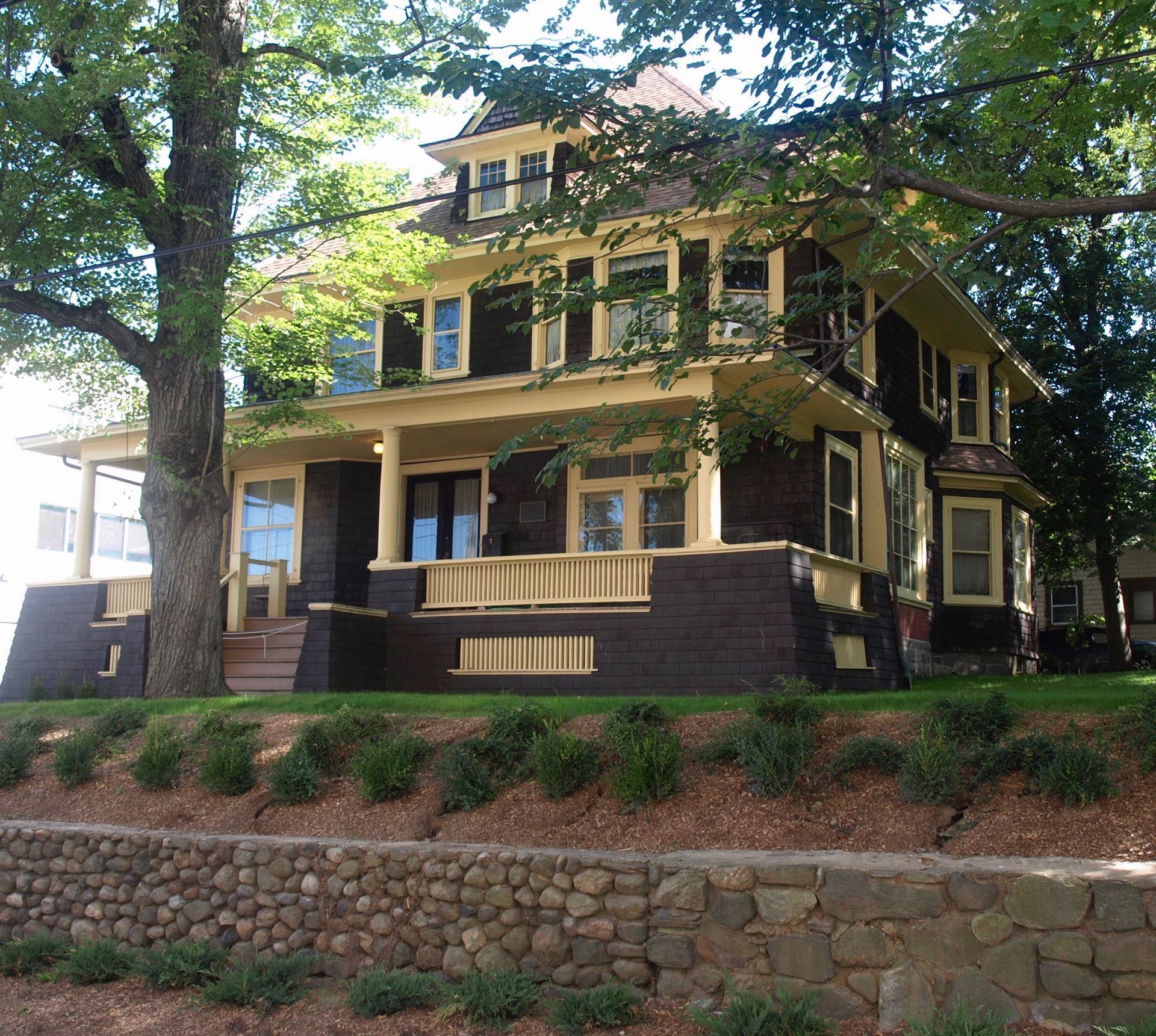The Percy Grainger Home and Studio
Percy
Grainger, born in Australia in 1882, was a renowned composer and
pianist, a writer and watercolorist, a clothing designer and pioneering
collector of folk songs. For forty years, from 1921 until his death in
1961, Grainger occupied the house at 7 Cromwell Place, White Plains,
using it for his residence, practice studio, and laboratory for his
avant-garde musical compositions and experimental music machines. The
American four-square wood shingled house is the resource most significantly associated with Grainger in America. This
historic house, built in 1893, and added to the National Register of
Historic Places on April 8, 1993, was originally the residence of David
Cromwell, banker and prominent local citizen. Cromwell served as
Westchester County Treasurer and Chief Officer of the then Village of
White Plains. He was president of several local banks, most notably the
Home Savings Bank. Cromwell
built the two streets which connect Maple Avenue and East Post Road.
Chester Avenue, parallel and to the east of Cromwell Place, built and
deeded to White Plains in 1891, was named for his son John Chester
Cromwell. Chester later lived in a house there, which still stands
behind the Percy Grainger House. He died in 1907, age 30, while fighting
a fire on Main Street, only days after he was married. |
While some of the Cromwells’ household items are stored on the third floor, the Grainger Home and Studio remains today furnished as it was during Grainger’s lifetime, a dramatic living testimony to the life and times of a multi-faceted genius. It is one of the cultural gems of Westchester County and a site visited by a steady stream of musicians, historians and students from all over the world.
